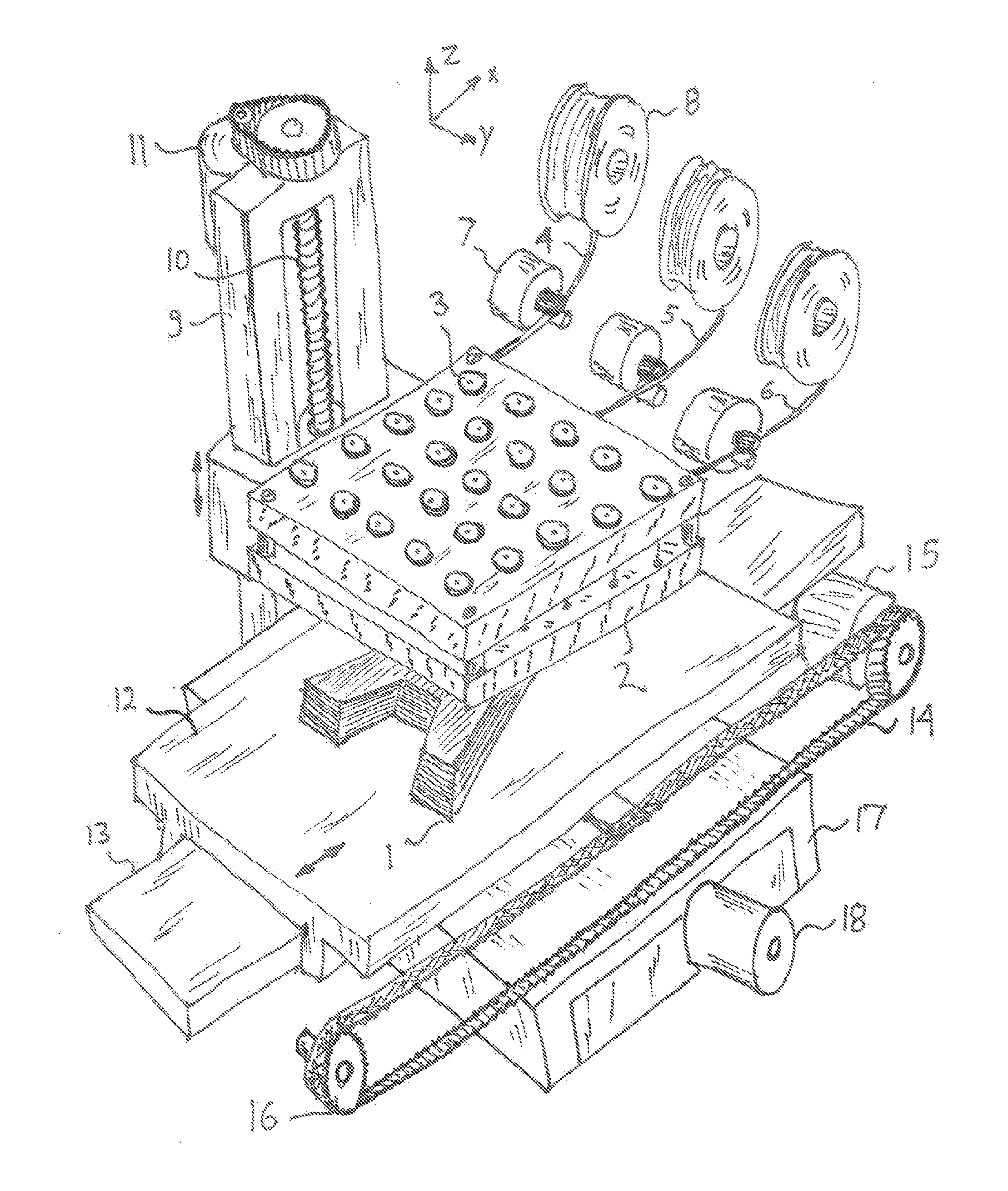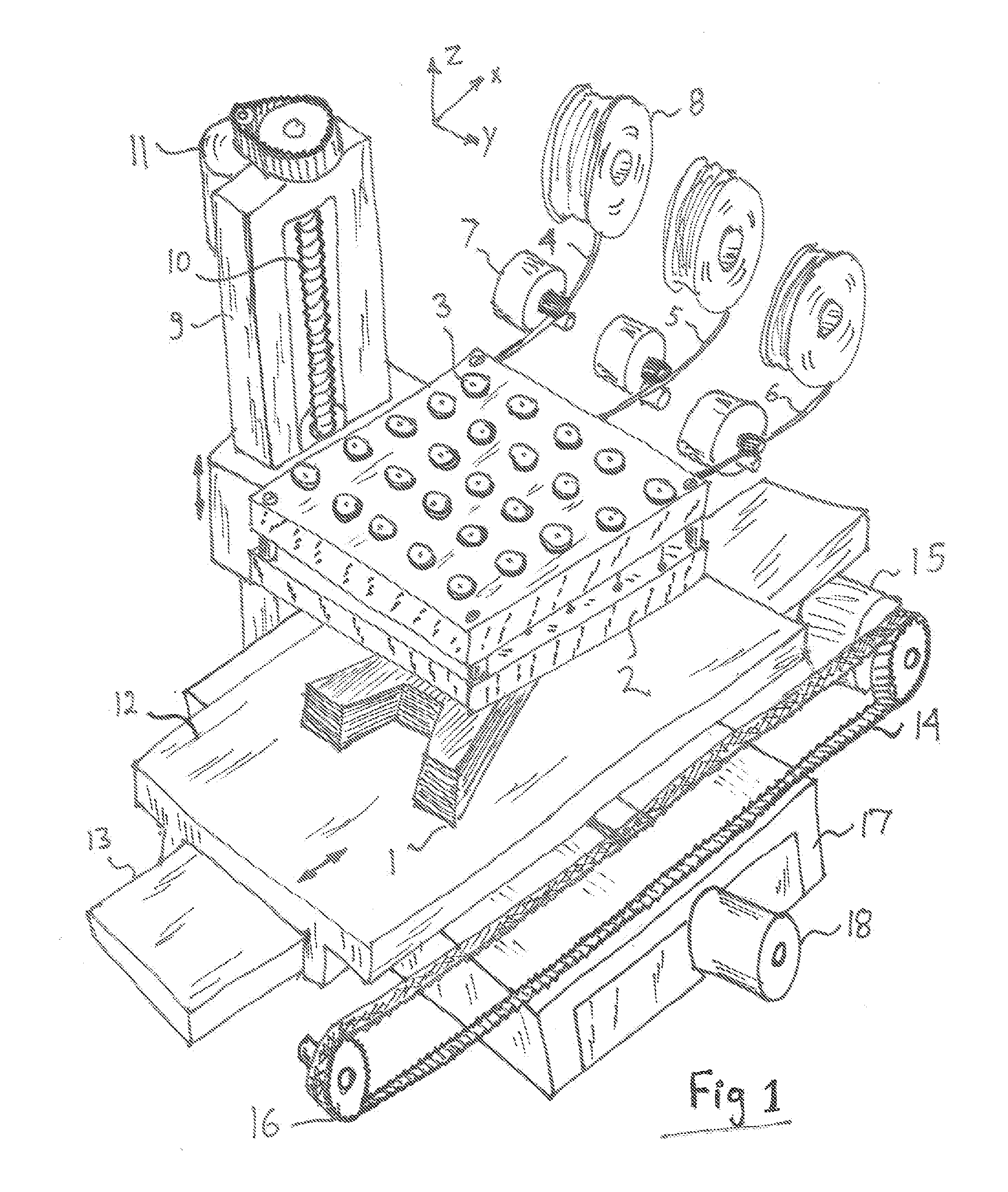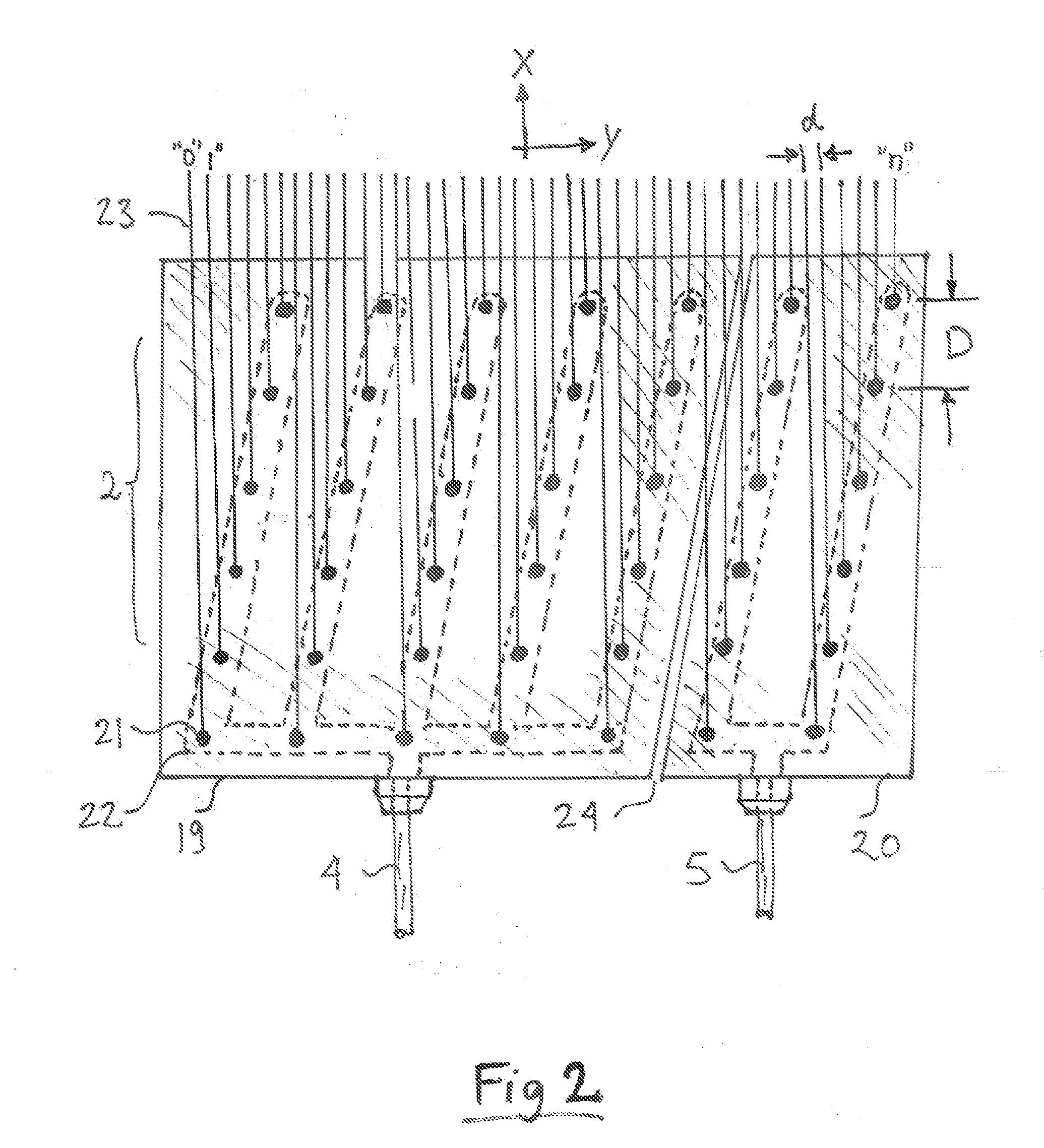3D Printer Based on a Staggered Nozzle Array
a 3d printer and array technology, applied in the field of 3d printing, can solve the problems of low speed, inability to handle the very high viscosity of most molten plastics, and inability to meet the requirements of fdm technology, and achieve the effect of higher pressure and higher deposition rate of each nozzl
- Summary
- Abstract
- Description
- Claims
- Application Information
AI Technical Summary
Benefits of technology
Problems solved by technology
Method used
Image
Examples
Embodiment Construction
[0017]FIG. 1 shows a 3D printer based on a staggered nozzle array. An object 1 is being built up layer by layer by multiple nozzles forming nozzle array 2. Typically nozzle array 2 is heated and the nozzles are depositing molten polymers, such as ABS or PLA. Each nozzle contains a valve actuated by actuator 3. Since nozzles are mounted together, all deposited lines forming a layer will be deposited as parallel lines, raster-scan style. The relative motion between nozzle array 2 and object 1, being formed on bed 12, can be done by moving bed 12 or the nozzle plate 2. In the preferred embodiment object 1 is moving. In the preferred embodiment the number of nozzles is sufficiently high, typically 100 to 1000, to allow the deposition of a complete layer in one pass of bed 12 under nozzle array 2. Bed 12 is mounted on a linear slide 13 and driven by motor 15 via timing belt 14. In the preferred embodiment all motors in FIG. 1 are stepper motors, therefore their position is is known witho...
PUM
| Property | Measurement | Unit |
|---|---|---|
| diameter | aaaaa | aaaaa |
| diameter | aaaaa | aaaaa |
| diameter | aaaaa | aaaaa |
Abstract
Description
Claims
Application Information
 Login to View More
Login to View More - R&D
- Intellectual Property
- Life Sciences
- Materials
- Tech Scout
- Unparalleled Data Quality
- Higher Quality Content
- 60% Fewer Hallucinations
Browse by: Latest US Patents, China's latest patents, Technical Efficacy Thesaurus, Application Domain, Technology Topic, Popular Technical Reports.
© 2025 PatSnap. All rights reserved.Legal|Privacy policy|Modern Slavery Act Transparency Statement|Sitemap|About US| Contact US: help@patsnap.com



